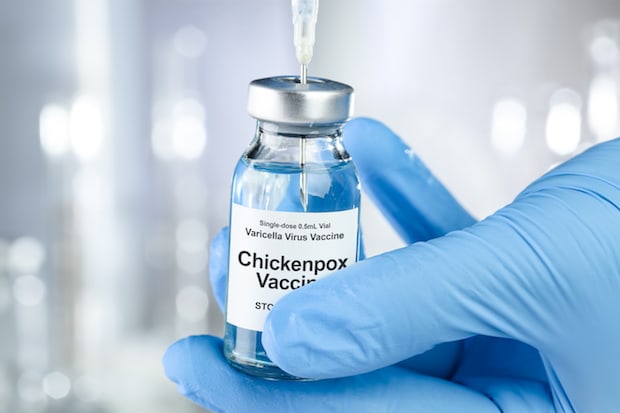Table of Contents
III. Types of Herpes Viruses in Detail
Common Viral Infections
Herpes, chickenpox, and shingles are well-known viral infections caused by herpes viruses. Viral infections are more prevalent in those with a weakened or compromised immune system. Some infections, like roseola infantum and cytomegalovirus, target newborns and children.
Herpes viruses are transmitted through close contact with an infected person, so lowering your risk of getting an infection usually involves good hygiene and not sharing personal items. Despite the precautions many take, infections can occur to anyone, which is why there are drugs like Zovirax (acyclovir), Zovirax cream, Valtrex (valacyclovir), and Famvir (famciclovir) available to treat the symptoms of a herpes virus infection.
Sexual intercourse is a common way for herpes to transmit. Herpes is divided into two categories: oral herpes and genital herpes. Oral herpes is typically caused by herpes simplex type 1 (HSV-1). Symptoms of oral herpes generally include cold sores and fever blisters around the face. HSV-1 can be contracted from everyday interactions like kissing or sharing eating utensils. It is estimated that almost 70 percent of people under 50 have dormant HSV-1. Although HSV-1 is referred to as oral herpes, it can spread to the genitals through oral sex with an infected person. [1] Genital herpes is primarily caused by herpes simplex type 2 (HSV-2) and is characterized by ulcers, sores, or blisters in and around the genital area. Men can develop sores on the penis and scrotum, while women can develop sores in the vaginal area and cervix. Sores commonly display on the buttocks, thighs, anus, and urethra for both men and women. In rare instances, HSV-2 can cause symptoms on the mouth. [2] The varicella-zoster virus is the third type of herpes virus that can cause blisters and sores. This third herpes virus is responsible for chickenpox and shingles. Chickenpox does not typically occur twice, but the varicella-zoster virus does lay dormant and can reactivate to cause shingles. Shingles involves painful rashes and fluid-filled blisters. It can sometimes result in chronic pain. [3] In addition to the three types of herpes viruses described above, there are five more kinds of herpes viruses responsible for various diseases. Herpes virus type 4 is called the Epstein-Barr virus (EBV) and causes infectious mononucleosis. [4] EBV is very common. Almost 95 percent of adults in the United States have had an EBV infection. EBV is spread through kissing, and symptoms include fatigue, fever, sore throat, and swollen lymph nodes. [5] EBV may also cause certain cancers such as nasopharyngeal cancer, Burkitt lymphoma, and Hodgkin lymphoma. [4] The fifth type of herpes virus is cytomegalovirus (CMV). This type of herpes virus causes serious infections and typically targets people with a weakened immune system and newborns. Blood tests show that up to 90 percent of adults have had a CMV infection at some point. Symptoms of CMV include fever and fatigue, with serious complications ranging from blindness to damage to other internal organs. CMV can cause severe illness in infants infected before birth. Infected people shed CMV in their urine, saliva, stool, breast milk, or semen periodically; contact with infected bodily fluids is primarily how CMV is transmitted. [6] Herpesviruses 6 and 7 can both cause roseola infantum. [7] This type of viral infection occurs in infants or young children. Roseola infantum is characterized by a high fever followed by a rash. After contracting roseola infantum, symptoms take five to 15 days to occur. Mild side effects of this infection include a runny nose, sore throat, and an upset stomach, while severe side effects can include seizures and enlarged lymph nodes. [4] Herpes virus type 8 causes Kaposi’s sarcoma.[7] Herpes virus type 8 causes Kaposi’s sarcoma. [4] There are four types of Kaposi’s sarcoma, and they are: Kaposi’s sarcoma is a type of skin cancer. Symptoms usually appear as pink, purple, or red bumps on the skin. Kaposi’s sarcoma can lead to complications such as cancer invading the bone, the mouth, or the digestive tract, where it can cause excessive bleeding without showing symptoms. [8] All eight types of herpes viruses do not leave the body once an infection takes hold. They will remain within their host cell and stay dormant. Inactive viruses may reactivate and cause different diseases. An example of this is herpes virus type 3, which can cause chickenpox and resurface as shingles. Diagnosis for each type of herpes virus differs. For herpes, chickenpox, and shingles, it is usually fairly simple to evaluate visible blisters and rashes. Infectious mononucleosis is diagnosed with a blood test, and roseola infantum is diagnosed based on fever temperature and child’s age. Kaposi’s sarcoma requires a biopsy to diagnose. [4] The first step is to talk to your doctor if you are displaying symptoms of a herpes virus. For many herpes viruses, treatment will include antiviral drugs such as Zovirax (acyclovir), Zovirax cream, Valtrex (valacyclovir), and Famvir (famciclovir). [4] Many symptoms of herpes viruses can overlap, so it is important to consult your doctor for a proper diagnosis so that you may find the right treatment plan. The content in this article is intended for informational purposes only. This website does not provide medical advice. In all circumstances, you should always seek the advice of your physician and/or other qualified health professionals(s) for drug, medical condition, or treatment advice. The content provided on this website is not a substitute for professional medical advice, diagnosis, or treatment.
Herpes and Shingles
Types of Herpes Viruses in Detail


Diagnosis and Treatment
